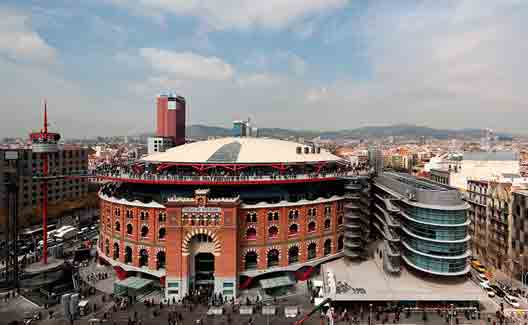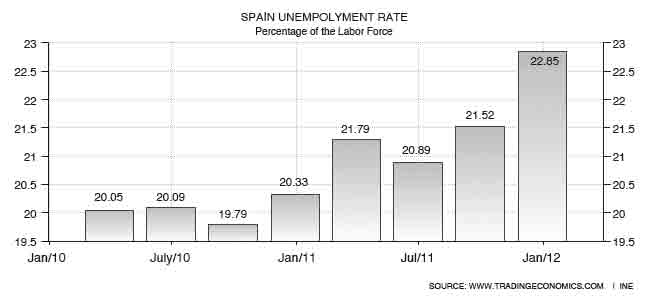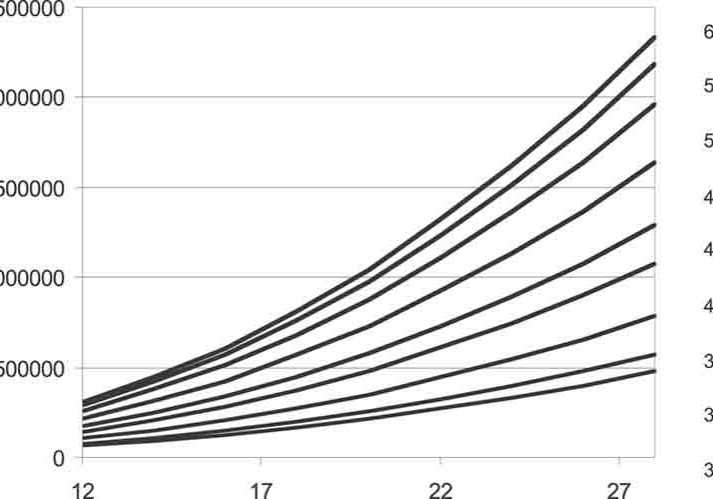Spain: An Economic and Industry Trends Update
Jul 1, 2012

The country’s general economy, employment rates and construction industry are covered.
Over the past few years, Elevator World, Inc. has studied the trends of international markets and how they have been impacted by the global recession. The goal of this report is to provide a general understanding of Spain and how its economy and certain industries have shifted as a result of market changes. This endeavor also aims to provide impressions of the country’s general economy, employment rates and construction industry.
Overview
With a population of approximately 46 million, Spain has the world’s 13th-largest economy. Its major metropolitan areas include Madrid, Barcelona and Velencia. The country is known for its exports, which grew in 2010 and should contribute positively to the gross domestic product (GDP). However, during the fourth quarter of 2011, the country experienced a 0.3% decrease in GDP, which, according to a January report by BBC News, was expected to continue falling.[1] In April, CNN Money reported the country had in fact fell into a second recession and its GDP fell by 0.4% in that quarter.
Employment
In January, Spain’s unemployment rate reached 22.9%, the country’s highest in 14 years[6] and the highest in the European Union.[2] On April 27, Spain’s government announced the country’s unemployment had reached a record 24.4%. The country is also said to have Europe’s third-highest budget deficit, despite reduction attempts.[3] However, in 2010, the country started stabilizing after nearly seven quarters of negative growth.[8] According to the CIA World Factbook, the nation has endured high jobless rates for decades, even during times of rapid economic growth, as seen from 1994-2008.[7]
Women, young people and immigrants appear to be the most affected by the unemployment rates. In 2011, Mary Anne Thompson, president and founder of Going Global, Inc., reported that the Spanish government was funding plane tickets for immigrants to return to their native homes, because it was more affordable than paying unemployment benefits. Another notable contribution to Spain’s jobless rates is its rapid modernization, which results in a decline in positions related to agriculture and other “traditional” industries.[7]
Though one might consider the unemployment rate indicative of the country’s current GDP, the European Central Bank suggests the country’s tourism, exports, spending and investment are the likely causes of GDP contraction in 2011, despite the fact that Spain is still considered one of the world’s top tourist locations.[6] In 2011, the European Commission suggested tourism would see a spike “in terms of geographical diversification.”[8]
Spain’s Prime Minister Mariano Rajoy, who was elected in a landslide election victory in November 2011, has unveiled plans to reduce the country’s public deficit up to EUR16.5 billion (US$21.4 billion) in 2012.[4] He also announced his two main tasks are to lower unemployment and stimulate growth. Spain’s former Prime Minister, José Luis Rodriquez Zapatero, concentrated on public-works spending and unemployment benefits; however, the budget deficit rapidly increased, and in 2010, the government introduced “austerity reforms to reduce the deficit.”[5]
Thompson also reported in 2011 that the government “optimistically predicts the unemployment rate will decline to 16% by 2014.”[6] Despite the outlook, the Organisation for Economic Cooperation and Development (OECD) claims Spain will continue to struggle financially. The organization also anticipates the unemployment rate to “remain high for some time to come.”[6]
Bloomberg Businessweek reported in January that Spain’s unemployment rate could rise if the government’s austerity goals are not successful. With such a high jobless rate, some believe the country’s economy is at risk for continued “deterioration.”[2]
Additional Economic Trends
According to the 2012 Index of Economic Freedom, Spain’s economic freedom ranked 17 out of 43 European countries, “well above the world average.”[5] Some consider one of the main contributors to this ranking to be the lack of government spending management. The index further claims, “Large fiscal deficits and rising public debt signal the need for financial management reforms and return to a sustainable level of public spending.”[4]
Spain’s banking system has been considered transparent in comparison to surrounding countries. Its savings banks are often thought to be “too politically powerful to fail” and have been shielded from market pressures. However, as a result of the housing boom, many banks remain overwhelmed with “bad loans.”[4]
Construction and Major Projects
According to the Bank of Spain, the country’s construction industry is still on a “path of contraction.” Additionally, Elevator World’s 2010 Vertical Transportation Industry Profile shows the country’s new construction and modernization markets are below average, with only 26,200 related personnel. However, the government is laboriously investing in developing transportation infrastructures, which is expected to create more jobs. Spain also has among the most high-speed rail tracks of any country in Europe.
In June 2010, ThyssenKrupp Elevadores España completed a major elevator and escalator installation at Lines 9 and 10 of the Barcelona Metro. The metro is comprised of 52 stations, expects an annual 130 million passengers and is among Europe’s longest underground lines. Given the size of the project, it was divided into four sections and is scheduled to be completed in 2014.
While new construction projects have not been on the rise, a few major attractions have been developed over the last few years. In March 2011, the Las Arenas Shopping Center in Barcelona was inaugurated and is said to be Europe’s largest shopping dome and is one of the city’s main attractions. It was built in a historic area, the Las Arenas bullring, and is comprised of 125,000 m2 of commerce, leisure and office space.
In May 2011, ThyssenKrupp Elevator Southern Europe, Africa and Middle East, S.L.U. (SEAME), completed an escalator and inclined elevator installation in Santa Coloma de Gramanet, a suburb of Barcelona. The project was part of the Plan for the Improvement of Mobility and Accessibility for Pedestrians and was selected for the Sixth Edition of the European Prize for Public Urban Space.
On March 18, the company’s SEAME division announced the inauguration of its elevator factory, R&D center and test tower in Madrid, which is the first phase of the two-part project. Located in the Móstoles Technológico Park, the project also includes a logistics warehouse, international training center and offices.
The 2010 Vertical Transportation Industry Profile shows approximately 779,572 elevators and 10,100 escalators are in operation in Spain, with annual new installations accounting for 48,400 and 360, respectively. However, the elevator industry is constantly changing and defined by its participants and the market.
Conclusion
Though there are many perspectives and forecasts for Spain’s economy, the majority suggest slow growth will be seen in 2012. The country’s information- and communication-technology hubs are expected to show job increases, in addition to sustainability projects, which will require the installation of solar panels in new construction projects in Barcelona and Madrid. The continued work on Spain’s transport infrastructures is also expected to create more jobs. With time and careful management, Spain, like many countries, will eventually be able to overcome the worst of its economic recession.

References
[1] BBC News (2012). “Spain’s Economy Contracts by 0.3%.” (http://www.bbc.co.uk/news/business-16785473).
[2] Bloomberg Businessweek (2012). “Spain Economy Shrinks, Taking it to Edge of Second Recession.” (www.businessweek.com/news/2012-01-30/spain-economy-shrinks-taking-it-to-edge-of-second-recession.html).
[3] The Telegraph (2011). “Spain’s Economy Worsening, Says Central Bank.” (www.telegraph.co.uk/finance/financialcrisis/8983322/Spains-economy-worsening-says-central-bank.html).
[4] Spain Review (2011). “PM-elect Mariano Rajoy unveiled the general policies of his government.” (www.spainreview.net/index.php/2011/ 12/21/pm-elect-mariano-rajoy-unveiled-the-general-policies-of-his-government/).
[5] 2012 Index of Economic Freedom. “Spain: Economic Freedom Score.” (www.heritage.org/index/country/spain).
[6] Going Global, Inc. (2011) “Employment Outlook: Spain.”
[7] “Spain Economy: Employment Status.” CIA World Factbook. Central Intelligence Agency. (www.cia.gov).
[8] www.tradingeconomics.com
Get more of Elevator World. Sign up for our free e-newsletter.









